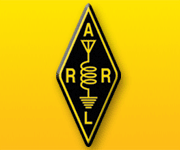2019 ARRL Field Day
Field Day is a great opportunity to get outdoors, gain experience assembling equipment in the rough, and operate a station under challenging band conditions. This year the West Valley Amateur Radio Association (WVARA) operated QRP in the 9A Battery category from Mora Hill in Los Altos, California, overlooking the Silicon Valley from an elevation of 500 feet. We had the luxury of lots of solar panels with enough surplus power to run fans in our tents as the
temperature on Saturday approached 90 degrees.
We had a Get-On-The-Air (GOTA) station, three HF CW stations, three HF SSB stations, two HF digital stations, and three VHF/UHF stations including one with satellite link capabilities. In spite of being limited to 5 watts, we succeeded in contacting 49 states (where was North Dakota?) and a bit of DX. And there enough VHF/UHF activity to keep us busy on the 6-, 2- and 70 cm bands including three satellite QSOs. We managed to make roughly 2200 contacts in 24 hours – not bad for 5 watts! Our GOTA station (W6ZZZ) was particularly popular with plenty of drop-in visitors including a good number of kids. Kevin Smith, our GOTA coach, was kept busy from 11am until 10pm.
Being outdoors also meant that we got to put up wild-n-crazy antennas that our spouses and neighbors might never allow back home. Antennas on Mora Hill this year included a pair of 4-band (10/15/20/40) yagi antennas for CW and SSB, and a traditional tribander (with 40m driven element resonator) for the digital tent. SSB, CW, and Digital each had a triplexer which enabled sharing each yagi between multiple transmitters. We also had separate 80m dipoles for each mode, and a 160m dipole which didn’t actually get used. GOTA had its own set of antennas.
In order to minimize interference within our site, we took care to have HF transceivers with well-designed front-ends in order to minimize spur transmissions and receiver pumping/de-sensing. All of our site’s HF stations used Elecraft or Flex transceivers. We likewise set up most of our antennas in a line pointed at the East Coast, so the side lobe rejection helped reduce interference.
In addition to having a great time, each year we work at improving our equipment, antennas and operating skills. We also try to do something new and cool. This year’s cool new thing involved Bobby’s van which came with a self-contained 30 foot telescoping mast. In order to minimize interference between the CW and digital stations, we always locate the digital yagi about 200 feet from the rest of the site. This year the digital team was able to avoid long runs of coax by installing the digital RF hardware for both of their stations in the van and then running 200 feet of Cat5 Ethernet cable to the main site where the digital tent and the Flex terminals were located. This resulted in a significant reduction in set-up effort and likewise avoided a dB or two of feedline loss. Not surprisingly, we had a big jump in the number of digital QSOs (more than 400), almost all involving the new FT8 mode. We also found that one operator could easily run both digital stations simultaneously. We saw very little PSK or RTTY this year, which are more operator intensive.
With the decline in the sunspot cycle, band conditions were less than stellar – especially when compared to what we’ve seen the previous few years. According to the ARRL’s propagation bulletin, the average sunspot count during the week of Field Day this year was zero. Argh! The solar flux during the weekend was around 68. Fortunately, geomagnetic field activity was generally quiet with K-index in the neighborhood of 1.
As expected, 20- and 40-meters were the most active bands, but the biggest surprise was a brief 10 meter opening on Saturday afternoon. Mark Sayre, our 40/10 SSB station captain, mentioned that his personal highlight was the 10 meter opening around noon on Saturday with some sporadic E propagation which resulted in 27 contacts mostly into Washington, Colorado and a bit of the upper Midwest. His favorite contact was a guy who was "Mountaintop QRP" in EWA. To get a phone contact (off the side of the beam) on 10 meters with a QRP portable station given the state of the bands these days was special.
Be sure to let us know if you'd be interested in getting involved with our team in 2020. If you have any questions, you can reach us via CQFieldDay@gmail.com or view our Field Day plans at www.wvara.org.
-- K6EIBack





















